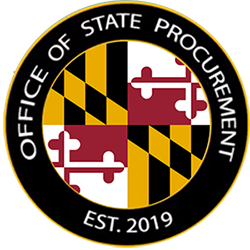2.1 Identifying the Need
2.2 Determining if the Good/Service is Exempt
2.3 Request for Information (RFI)
2.4 Contract Types
The first step in a procurement is for the procurement officer to identify the type of purchase the agency needs. Such identification will determine the appropriate procurement path and also whether there are any relevant exemptions that may apply to the purchase. State agencies purchase many goods and services, including:
2.1 Identifying the Need
● Architectural and Engineering services;
● Human, social, cultural, educational services;
● Information technology services, supplies and equipment;
● Maintenance;
● Banking, investment, and other financial services;
● Insurance and insurance-related services;
● Leases for agency supplied employee housing;
● Purchasing, leasing, and rental contracts for acquisition of motor vehicles for use by State officials and employees;
● Construction and related services;
● Equipment;
● Commodities and Supplies;
● Services provided under an energy performance contract; and
● Other services.
Once the agency has identified the need, the procurement officer should determine whether the agency has the authority to procure that type of good or service and if Control Agency authority applies. Presently, the State has four control agencies with delegated procurement authority: (1) STO; (2) DGS; (3) MDOT; and (4) MPA.[16]
2.2 Determining if the Good/Service is Exempt
The procurement officer should determine whether the procurement or agency is exempt from the State’s procurement regulations, e.g., under COMAR 21.01.03.01, SFP 11-202, or the agency’s enabling statute. Even if a procurement or agency is exempt from one or more provisions of COMAR Title 21, the best practices provided in this Manual may be helpful to the procurement officer.
An example of a purchase that may be exempt from COMAR Title 21 is an agreement between a State agency and another governmental entity, also known as a memorandum of understanding (MOU) or an Interagency Agreement.[17] The Department of Budget and Management (DBM) has review and approval authority over certain Interagency Agreements between State agencies and public institutions of higher education.[18]
2.3 Request for Information
A Request for Information (RFI) is used primarily as a planning tool when an agency does not have the necessary information to prepare a solicitation document. RFIs can be used to generally ascertain the level of interest of prospective respondents or to identify industry standards, best practices, potential performance measures, or delivery structures.
A preliminary solicitation document, which provides an initial description of the program objectives and specifications, may accompany an RFI for review by potential respondents. See SFP §13-212.1 for additional parameters. RFIs are not a source selection method and cannot be used to procure goods or services.
2.4 Contract Types[19]
Any type of contract that promotes the best interests of the State may be used, except for cost-plus-a-percentage-of-cost contracts and subcontracts, which are prohibited.[20] Preference shall be given to the following contract types, in this order:
(a) Fixed-price;
(b) Fixed-price incentive;
(c) Cost plus incentive fee; and
(d) Cost-plus fixed fee or cost-reimbursement.
The procurement officer should select a contract type to obtain the best value in the time required and at the lowest cost or price or greatest revenue to the State, and should review the elements of the procurement that directly affect cost, time, risk, and profit incentives bearing on the performance before choosing a contract type. Except for firm fixed-price contracts, a contract type may not be used unless the procurement officer determines that a contractor’s accounting system complies with COMAR 21.06.03.01.B (4).
Factors to consider in selecting the contract type include:
(a) The type and complexity of the procurement;
(b) The difficulty in estimating performance costs;
(c) The administrative costs to both parties;
(d) The degree to which the State shall provide technical coordination during performance of the contract;
(e) The effect of the choice of the type of contract on the amount of competition to be expected;
(f) The stability of material or commodity market prices or wage levels;
(g) The urgency of the requirement; and
(h) The length of contract performance.
The types of contracts authorized under COMAR are listed below. Often a contract includes several contract types, for example, a multi-year indefinite quantity contract with firm-fixed-prices and multiple awards or a contract with a fixed-price element plus a cost-reimbursement element. Some contract types require written determinations before usage. See COMAR for more information regarding each contract type and any additional requirements.
2.4.1 Fixed-Price Contracts
Appropriate for when the type of work can be reasonably specified and the cost reasonably estimated, e.g., construction or standard commercial products. Includes Fixed-Price (including fixed-unit-price (used in indefinite quantity contracts)), Firm Fixed-Price, and Fixed-Price with Price Adjustment contracts. This is the most commonly used contract type and the only contract type that can be used in competitive sealed bidding.
2.4.2 Cost-Reimbursement Contracts
Contracts under which the State reimburses the contractor for those contract costs, within a stated ceiling, and a fee, if any, which are recognized as allowable and allocable under the cost and price principle regulations. Appropriate for when there are contract performance uncertainties or the cost of the contract cannot be sufficiently estimated. Requires appropriate monitoring by the State to assure objectives are met. Includes Cost and Cost-Plus Fixed Fee Cost-Reimbursement contracts.
2.4.3 Cost Incentive Contracts
Allows for rewards or penalties when the contractor exceeds or falls short on performance or target cost. Includes Cost-Plus Incentive Fee and Fixed-Price Incentive contracts.
2.4.4 Time and Material Contracts and Labor Hour Contracts
Includes dollar ceilings stated in the contract that may not be exceeded without the procurement officer’s prior determination and approval. Requires appropriate monitoring by the State. Includes Time and Material or Labor Hour contracts.
2.4.5 Quantity Contracts
Appropriate when anticipated quantities are known or unknown, depending on the circumstances, or when a specific minimum quantity is required. Includes Definite Quantity, Indefinite Quantity, and Requirements contracts.
2.4.6 Multi-Year Contracts
Contracts that require appropriation for more than one fiscal year in order to promote procurement economy and efficiency. Requires specific information to be included in the solicitation.
2.4.7 Multiple Award Contracts
When a contract award to two or more vendors for the same or similar goods or labor is needed for adequate delivery, services, availability, or for product compatibility. Not to be used when a single award would meet the State’s needs without sacrifice of economy or service.
2.4.8 Personal Property Leases
A contract for the use of supplies that are not owned by the State.
2.4.9 Lease with Purchase Option
An option to purchase supplies or facilities off of a lease. Requires that the lease has been competitively procured.
[18] SFP §3-207; https://dbm.maryland.gov/contracts/Pages/InteragencyAgreementApprovals.aspx
v2.04.2020

